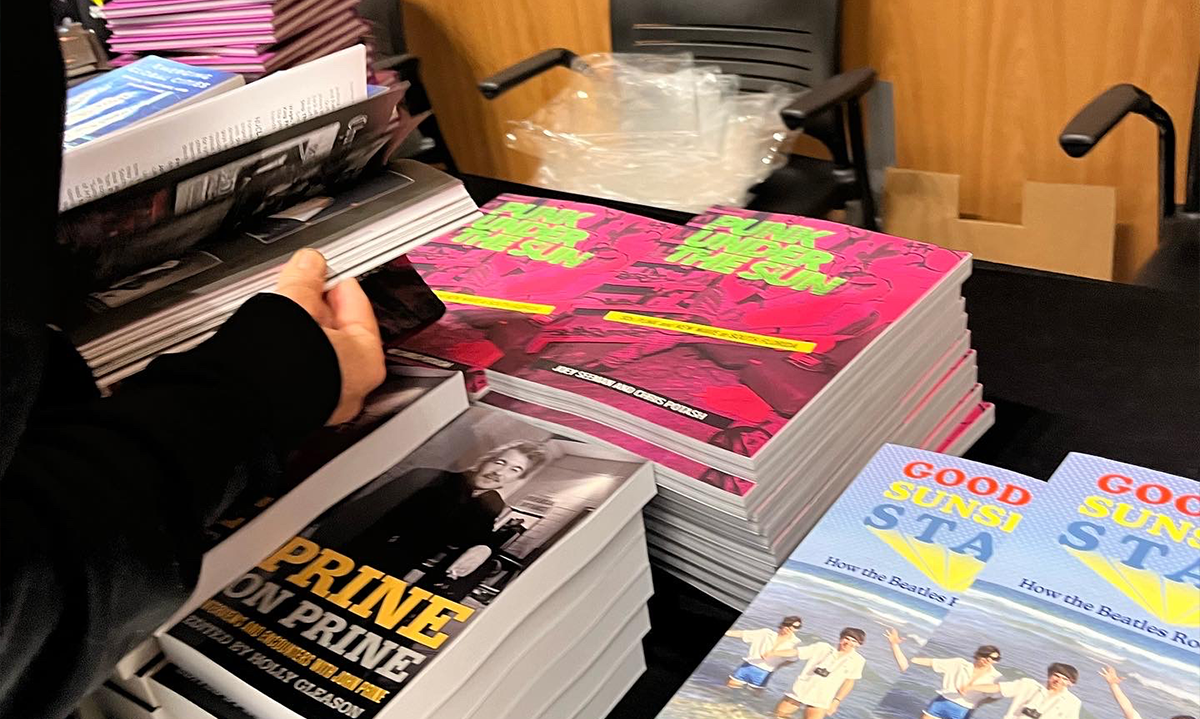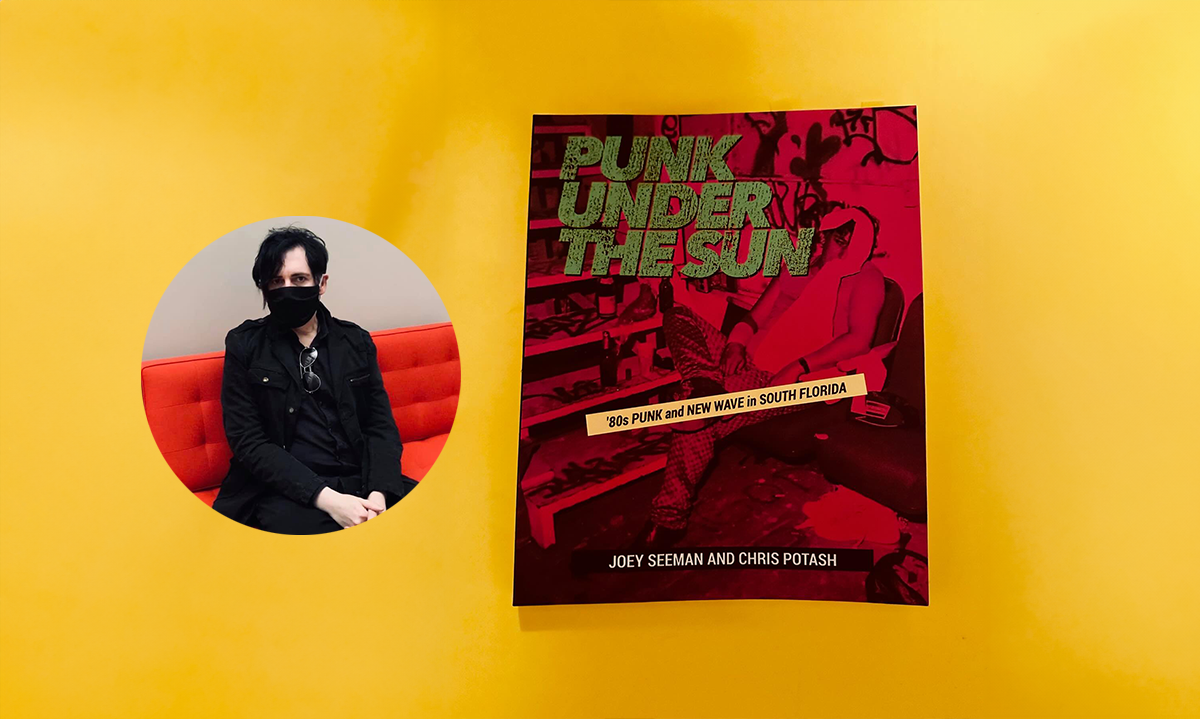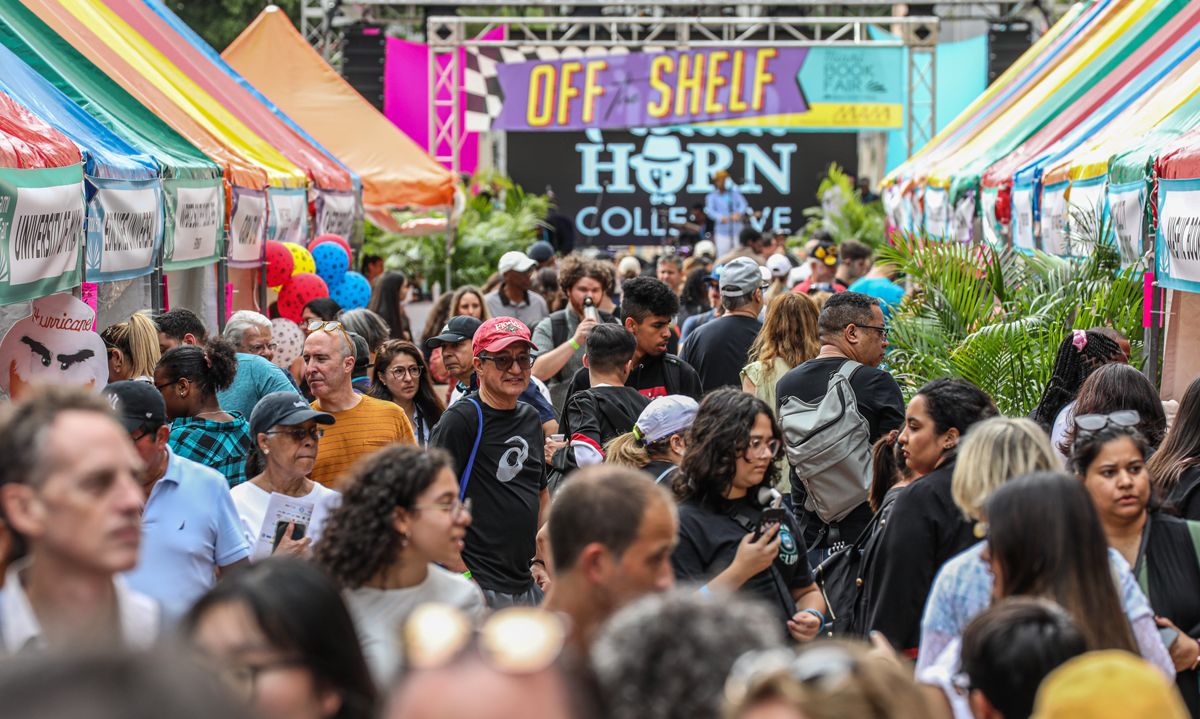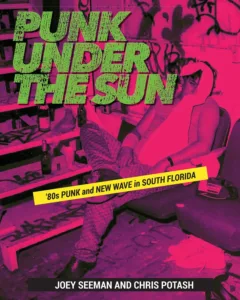
Chicago, IL—HoZac Books is pleased to announce the release in November 2023 of the first book to chronicle the alternative music, art, and club scenes of a particularly amazing place and time: South Florida in the 1980s. Comprehensive in scope, Punk Under the Sun documents the bands, venues, galleries, and scenesters who started and sustained the groundswell of activity that made Miami and nearby Beaches a progressive mecca—the southernmost creative hotspot in the continental United
States—and set the stage for the Magic City to become the international cultural destination it is today.
Authors Joey Seeman and Chris Potash were there, participating in and documenting the first, second, and subsequent waves of musicians, indie labels, DJs, record stores, radio stations, publications, and players who came together to create a unique cultural moment and movement in South Florida history. This essential document of a powerfully individualistic and expressive decade features never-before-seen photographs by Jill Kahn, Debbie Baylis Sunshine, Laurie Alaimo, and many others, plus dozens of fliers, posters, advertisements, stickers, and graphics from that heady time. Punk Under the Sun includes a discography of 1980s albums and singles, and an 11-page index
that’s an invaluable Who’s Who of the people and places that forged South Florida’s alternative culture.
In the 1970s, Miami Beach was a crumbling pastel paradise, gone to seed since its sun ’n’ fun heyday in the 1950s. In the 1980s, even as the boarded-up hotels, grindhouse theaters, and grimy streets served as backdrops for Miami Vice shoots, South Florida—from West Palm to Lauderdale to South Miami—was being transformed by a relatively small but intensely free-thinking group of cultural pioneers. These DIY musicians, artists, and dreamers brought with them a ferocious creative energy and breathed new life into once-grand spaces. Abandoned bars, hotels, and restaurants were transformed into live-music venues, art galleries, and nightclubs that fostered an original-music scene rivaling larger ones, in talent, across the country. Driven by punk and New Wave music, the scene unfolded against a backdrop of racial, economic, and political upheaval as greater Miami emerged as a truly metropolitan, world-class city.
Bands like Screaming Sneakers, the Cichlids, Tight Squeeze, the Kids, Charlie Pickett & the Eggs, Critical Mass, the Eat, and the Reactions were on the front lines of the change. There were places to play dotted along the coast; underground and college radio stations spun the locally pressed records and spread the word about shows; people in the scene created zines and papered poles with photocopied fliers; the mainstream press even took note and started giving column inches to cover the
clubs. Meanwhile, national and international punk and New Wave bands began making the long road trip down the Florida peninsula to play at respected venues such as Flynn’s and the Cameo Theater, including the Ramones, Black Flag, Hüsker Dü, Adrenalin O.D., and Dead Kennedys.
Along with the music, a vital underground arts scene developed in South Florida, with happenings and openings contributing to the creative vibe and acting as the avant-garde for the artists and design professionals who would flock to Miami in the 1990s and 2000s. World-renowned artists such as Purvis Young were just starting to get recognition at this time and in turn brought attention to Miami as a destination for creatives.
In recent years there has been a growing appetite for books like this one that capture the sights, sounds, and unique personalities behind the progressive scenes that popped up around the United States in the 1980s, leading to the mainstreaming of the youth revolution signaled by the unprecedented commercial success of Nirvana. There already exist numerous books covering the Los Angeles, New York, San Francisco, D.C., Boston, and even Texas punk scenes. Finally, South Florida is in the spotlight.




